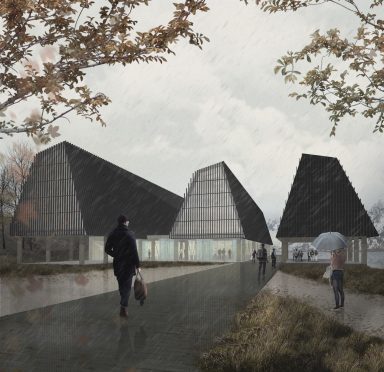ChrisJaffray
It’s one of the most tantalising questions in imagining the future: how will your community look 20, 50, 100 years down the line in tomorrow’s world?
And now, the work of two architecture students, exploring how oil- dependent economies can diversify and transform themselves, will go on public display in Aberdeen this week.
Annelie Kiviniemi and Daniel Cardno, who are both at Robert Gordon University, studied the Norwegian village of Eidsvåg and created a hypothetical settlement which focuses on the town’s maritime industry rather than oil.
The pair visited the country as part of their project and looked into potential infrastructure and public buildings as well as a shipyard, hydro dam and ferry terminal.
Mr Cardno, from Bridge of Don, explored the possibility of constructing a marine research centre on the island.
And the 23-year-old said: “This project emphasises Norway’s relationship with water and the maritime industry.
“The design uses a similar footprint and takes the shape of three hybrid portal frame buildings based on traditional Norwegian boat sheds.
“The buildings connect together at ground level and the concept works off a horizontal, solid and void basis.
Miss Kiviniemi designed the town’s ferry terminal, which would be used to transport locals from the suburbs to urban centres.
The 26-year-old from Finland added: “The project aims to reflect upon issues which may occur in towns and cities after the collapse of the oil industry.
“My proposal for a ferry terminal creates a connection point between existing public transport routes and the new development within the bay.
“The building accommodates passenger ferry docking, ticketing and administration, a range of learning and practical spaces for sailors and students of sailing as well as a public restaurant and bar.”
The duo’s work will go on display at the Scott Sutherland School of Architecture and Built Environment as part of the end-of-year show, which runs for a week from Saturday, June 18.
Lecturer Penny Lewis believes the venture should interest anybody who wonders what might happen in Aberdeen as the wells run dry.
She said: “The project has interesting parallels for Scotland, in that the countries share a comparable climate, landscape, extensive coastlines and the north sea, and face similar issues when thinking about a post-oil economy.”
